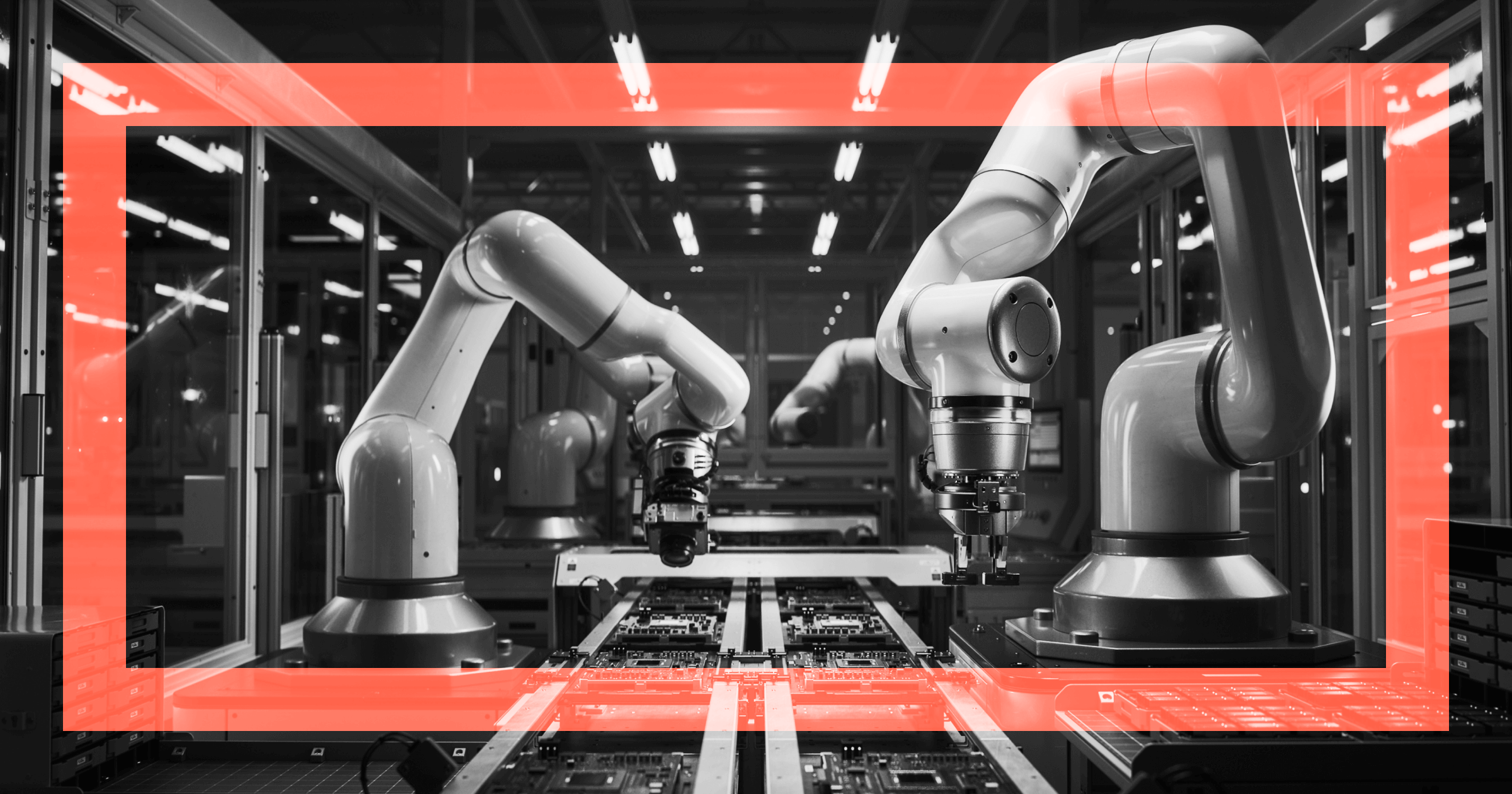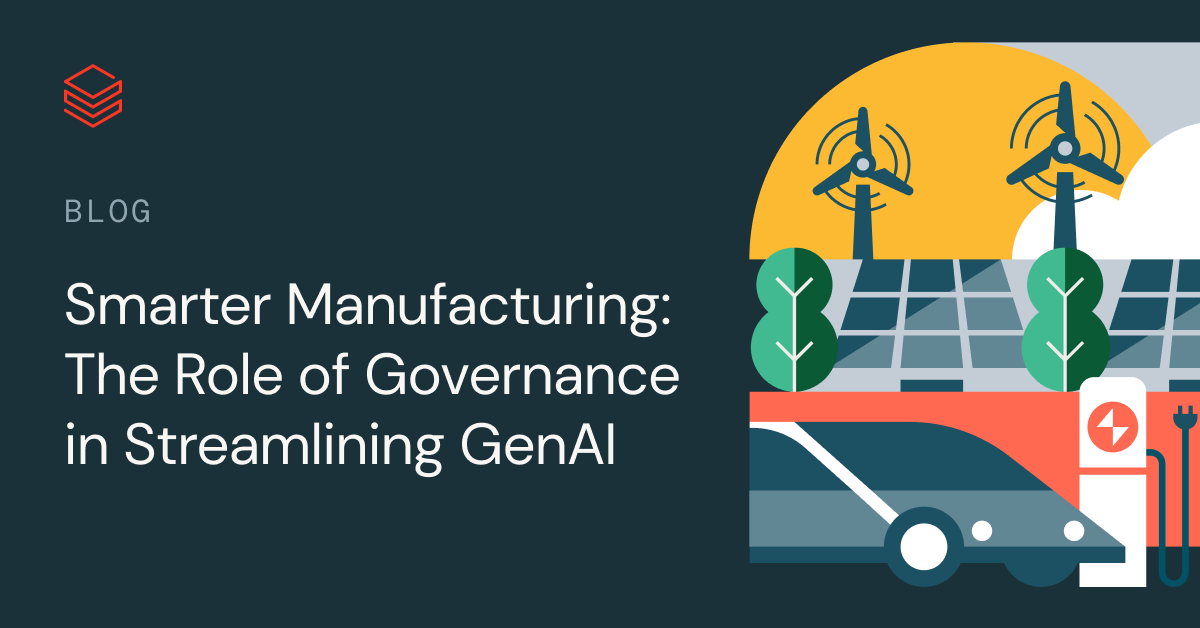Artificial Intelligence in manufacturing

In recent years, artificial intelligence has transformed from an aspirational technology to a driver of manufacturing innovation and efficiency. Understanding both the current landscape and future potential of AI in manufacturing has become essential for strategic decision-making. Recent research shows the manufacturing sector generates over 1,800 petabytes of data annually—more than any other industry—creating both opportunities and challenges for AI implementation.
How AI is used in manufacturing today
The use of AI in manufacturing is accelerating rapidly, with 41 percent of industry executives planning to increase their data and AI spending by more than 25 percent in the coming year, according to interviews with C-level executives of large enterprises and public-sector organizations conducted between July and September 2023 and published in an MIT Technology Review Insights report sponsored by Databricks. This investment is reshaping manufacturing operations across several key areas:
Predictive maintenance and quality control: AI-powered systems analyze real-time sensor data to predict equipment failures before they occur, dramatically reducing costly downtime. These systems can process thousands of data points per second from multiple sensors, identifying subtle patterns that can easily escape human detection. Quality control has been revolutionized by machine vision systems that can detect product defects with accuracy and speed, often achieving inspection rates hundreds of times faster than manual processes while maintaining higher accuracy levels. Watch how Corning leverages AI in manufacturing to improve product quality.
Supply chain optimization: Over half of manufacturers identify supply chain optimization as their top AI use case, according to the MIT/Databricks study. AI models can help predict disruptions, optimize inventory levels and improve logistics efficiency. These systems analyze complex global data patterns to help manufacturers make more informed decisions about sourcing, production and distribution. Modern AI systems can simultaneously monitor hundreds of suppliers, track global shipping conditions and adjust procurement strategies in real-time, providing a level of supply chain visibility and control previously impossible.
Process automation: AI-enabled systems are becoming more sophisticated, moving beyond simple repetitive tasks to handle more complex operations. For example, modern AI-powered robots can adjust their actions based on real-time environmental changes, making them more versatile and efficient than traditional automation. These systems can learn from experience, optimizing their performance over time and sharing learned improvements across systems. Read how Rolls-Royce has implemented AI to optimize processes.
Real-time analytics: Connected IoT sensors throughout manufacturing facilities generate massive amounts of data. AI systems transform this data into actionable insights, enabling real-time optimization of production processes and resource utilization. Advanced analytics platforms can now process data from thousands of sensors simultaneously, providing comprehensive visibility into operations and enabling immediate responses to changing conditions. Watch how Joby Aviation uses Databricks to extract insights from their data.
Benefits of AI in manufacturing
The impact of AI in manufacturing is substantial, with 76 percent of industry leaders expecting efficiency gains of more than 25 percent over the next two years, according to the MIT/Databricks survey. Beyond efficiency improvements, AI is transforming manufacturing operations through enhanced product quality, workplace safety improvements and sustainability enhancements. By analyzing vast amounts of production data, AI systems help manufacturers optimize resource usage, reduce waste and identify opportunities for process improvement that might otherwise go unnoticed. Watch how Repsol uses Databricks to achieve their emission reduction targets.
Potential downsides and challenges
Despite the promising benefits, manufacturers also face several challenges when it comes to AI implementation.
Infrastructure limitations: Many manufacturers struggle with legacy systems and disparate data sources. According to recent surveys, 36 percent of manufacturers currently support ten or more different systems, creating integration challenges and data siloes. This fragmentation makes it difficult to implement cohesive AI solutions and often requires significant infrastructure modernization before AI initiatives can succeed.
Data quality and management: The effectiveness of AI systems depends heavily on data quality and accessibility. Many manufacturers find their data trapped in closed proprietary systems, making it difficult to generate meaningful insights. Poor data quality, inconsistent formats and lack of standardization can severely limit AI effectiveness and require substantial cleanup efforts before AI systems can deliver reliable results.
Implementation costs: Modernizing infrastructure and implementing AI systems requires significant investment in both technology and talent. This can be challenging for smaller manufacturers who must carefully balance the potential benefits against upfront costs. Beyond the initial investment, ongoing maintenance, updates and training are additional financial considerations.
Workforce adaption: Successfully implementing AI requires upskilling existing workers and attracting new talent with AI expertise. This talent gap remains a significant challenge for many manufacturers, particularly in specialized areas like machine learning engineering and data science. Organizations must develop comprehensive training programs while competing for scarce AI talent in a competitive market.
Real-world examples
General Motors’ Super Cruise technology
GM’s implementation of AI in their Super Cruise systems demonstrates the potential of advanced AI applications in manufacturing. The system uses multiple AI models to process real-time data from vehicle cameras and external sources, enabling hands-free driving on compatible roads. This implementation showcases how modern cloud-based data architecture can support complex AI applications. The system processes enormous amounts of contextual data from embedded cameras and third-party sources about traffic flows and potential hazards, demonstrating the power of integrated AI systems.
Emerging generative AI applications
According to the survey, about 28 percent of manufacturers are already investing in generative AI, with another 61 percent experimenting with the technology. Applications include natural language interfaces for equipment interaction and AI-assisted maintenance troubleshooting. These systems are transforming how workers interact with complex machinery, enabling more intuitive interfaces and faster problem resolution.
Implementation considerations
Infrastructure modernization: 63 percent of manufacturers have incorporated data lakehouses into their architecture, with 84 percent of the remainder planning to do so within three years, according to the MIT/Databricks study This modern infrastructure is crucial for supporting advanced AI applications. Data lakehouses combine the benefits of data lakes and data warehouses, providing both flexibility and performance for AI workloads.
Scalability and integration: Focus on developing reusable frameworks and technologies when deploying AI to avoid creating new siloes of duplicating tech stacks. This approach reduces complexity and maintenance costs while improving system reliability and performance. Consider building modular AI solutions that can be readily adapted and reused across different manufacturing processes.
Data governance: Establish clear governance frameworks and access controls, particularly when considering data sharing with partners or third parties. This includes defining data ownership, quality standards and security requirements. Ensure compliance with relevant regulations while maintaining data accessibility for AI systems.
Democratization strategy: Plan for AI democratization across the organization. Generative AI tools are accelerating this trend, making AI more accessible to non-specialist users. Develop training programs and support systems to help workers at all levels leverage AI tools effectively while maintaining appropriate oversight and control.
Future implications
The future of AI in manufacturing points toward several emerging trends:
Industry data ecosystems: Cross-industry data sharing platforms are becoming increasingly important, enabling advanced data-driven applications and innovation. The World Economic Forum identifies such sharing as a key enabler for advanced manufacturing applications, though challenges around standardization and security remain.
Enhanced automation: As AI systems become more sophisticated, we’ll see increased automation of complex tasks while maintaining human oversight for critical decisions. This evolution will require careful balance between automation capabilities and human expertise.
Democratized AI access: Generative AI and other emerging technologies will make AI tools more accessible to workers across all levels of manufacturing organizations. This democratization promises to accelerate innovation and efficiency improvements, while creating new considerations for governance and control.
For data leaders, staying ahead of these trends while building robust, scalable AI infrastructure will be crucial for maintaining competitive advantage. Success will require balancing ambitious innovation with practical implementation constraints and maintaining focus on clear business value.



